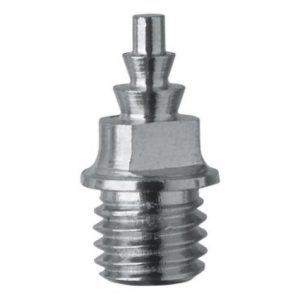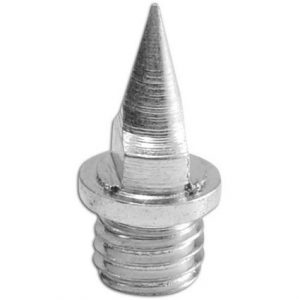The 1/4 inch pyramid spike is the one you see most often at the high school and college level for both sprinters and longer distance runners.
However, is it really the best type of spike for you?
Most people don’t think about different designs for their spikes, but some designs truly are better than others in certain cases!
There are the famous pyramid spikes, Christmas tree (also known as compression), needle, and post spikes. Don’t worry if you’re unfamiliar with all of them yet! After reading this article you should be able to pick out the perfect ones for yourself!
Best Track Spikes: Common Questions
Before buying the spikes, ask yourself the following question.
Will I be racing in an indoor meet during the season?
If yes, then your choice should be the 1/4th inch pyramid spikes because many indoor meets have a limit on their length. That limit just happens to be a quarter of an inch, so if you don’t want to run without spikes bring 1/4th inch ones!
Most tracks don’t care if you use the pyramid type, or the other variety, but some are very particular about it, so always have replacement 1/4th inch pyramid spikes with you wherever you go!
Now that you know about that, let’s get into the difference in performance between the different types!
A lot of the information that follows was presented in the science paper titled “Energy Return Of Different Designs Of Track Spikes“.
Even though the study only measured the energy output of different designs, we can infer from the results how the shape affects the runners’ times.
The Results
Modified Christmas Tree spikes (AKA compression) returned the highest amount of energy, followed by the Pyramid ones, regular Christmas Tree, and post. The pin/needle type took the last place.
What this means to you is that if you want more of the energy that you use while running to be used to propel you forward, you should get the compression or pyramid spikes.
However, just because the pin/needle type took the last place, it doesn’t mean that one should never use them. If an athlete has problems with slipping in running spikes (it happens), the pin type is the cure.
Pin spikes are more dangerous to the athletes around you, and they should almost never be used by hurdlers because of the danger of penetrating someone’s arms/legs if they fall.
Distance runners should also avoid pin/needle ones and should instead opt for the more standard pyramid spikes, because as the events get longer, the advantage of having more energy returned to you fades. And whichever spikes you use, it is never a good idea to run with ankle weights.
| Pyramid Spikes | Compression Spikes | Needle Spikes |
|---|---|---|
 |  |  |
Leave a Reply